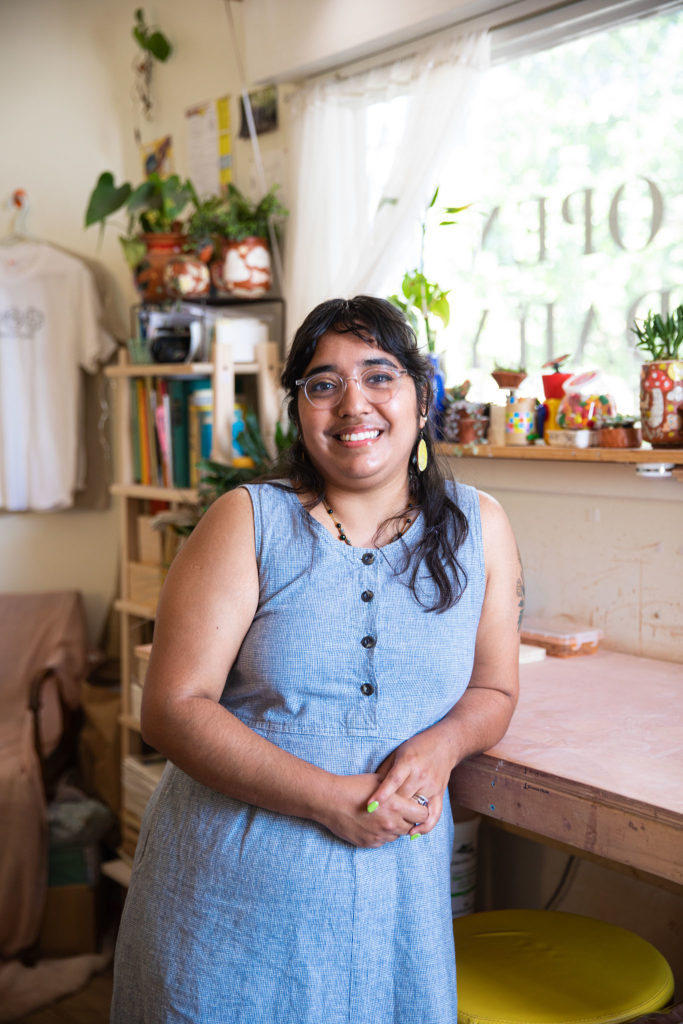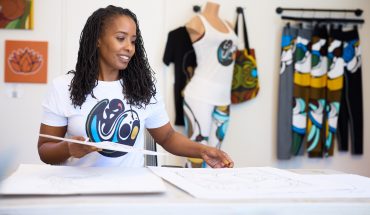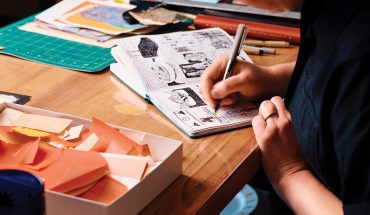Through her pottery and in her day job, Raleigh artist Laura Casas creates the quirky, optimistic world wants to see.
by Colony Little | photography by Taylor McDonald
For Laura Casas, clay is a form of discovery. In a storefront studio on Glenwood Avenue, this artist brings new life to mud and dirt. There, Casas can be found gently rolling red clay by hand, pulling and forming it into pots, vases, mugs and bowls. These vessels become a canvas for storytelling: On this earthenware landscape, Casas might paint a character lounging in grass gazing up at fluffy clouds, or vibrant rainbows and stars that play harmoniously with the sun and moon. With her hands and through her day job, Casas is shaping the world she wants to see.
Casas grew up in the rural community of Columbia in eastern North Carolina. When her elementary school lost its arts funding, her mother enrolled her in the Pocosin Arts School of Fine Craft, a gallery, studio and arts education center in town founded by arts educator Feather Phillips in 1994 to connect culture to the environment through the arts.
That appealed to the young artist. “It’s a hidden gem,” says Casas. “The classes were always connected to the wildlife refuge. In one of the most memorable classes I had, when I was pretty young, we took these huge charcoal pads and walked in the woods on a nature trail and would stop and sketch out something.”
The synergy between art and the land also taught Casas about sustainability and resourcefulness. She grew up on a farm, with a garden that fortified her material-making skills (creating pigments from crushed flowers is an early childhood memory), and dabbled in many mediums, including illustration, metalworking and enameling.
Casas planned to study music at Western Carolina University (she’s also a talented trumpet player), but the summer before her freshman year, the artists and guest instructors at Pocosin urged her to shift her focus into visual arts. She chose an interdisciplinary studio art program with a concentration on print illustration, but a daunting class changed her course.
“The ceramics professor was very intimidating — she had a really large personality,” says Casas. “But as soon as I was in her class, I fell in love. I realized that her big personality was due to her overall passion for clay. I wanted to exude that passion.”
The teacher who made this impact was Heather Mae Erickson, whom Casas affectionately calls her “clay mom.” Through Erickson, Casas learned that the ceramics community is like a family, with a network of artists who support, nurture and guide one another.
“I’ve kind of always been in an identity crisis, growing up in a mixed cultural setting,” says Casas, whose mother is American and father is Mexican. “I never felt like I fit in with either my dad’s side or mother’s side of the family, despite being loved by both groups.” But in college, through pottery, Casas found a community of like-minded creatives. “This was the feeling that I always wanted to find,” she says.
Pottery has also connected Casas to her paternal roots in Mexico. She found herself naturally drawn to red clay, which gets its shade from the iron ore deposits. The red clays that are indigenous to localities throughout Mexico are also found in central North Carolina.
“I took a class that made me look face-to-face with my history. Clay is in my genes; it’s all there,” she says. Her works evoke the shapes, colors and textures of the natural world, and she intentionally leaves “imperfections” like pinch marks or uneven edges that show evidence of her handwork.
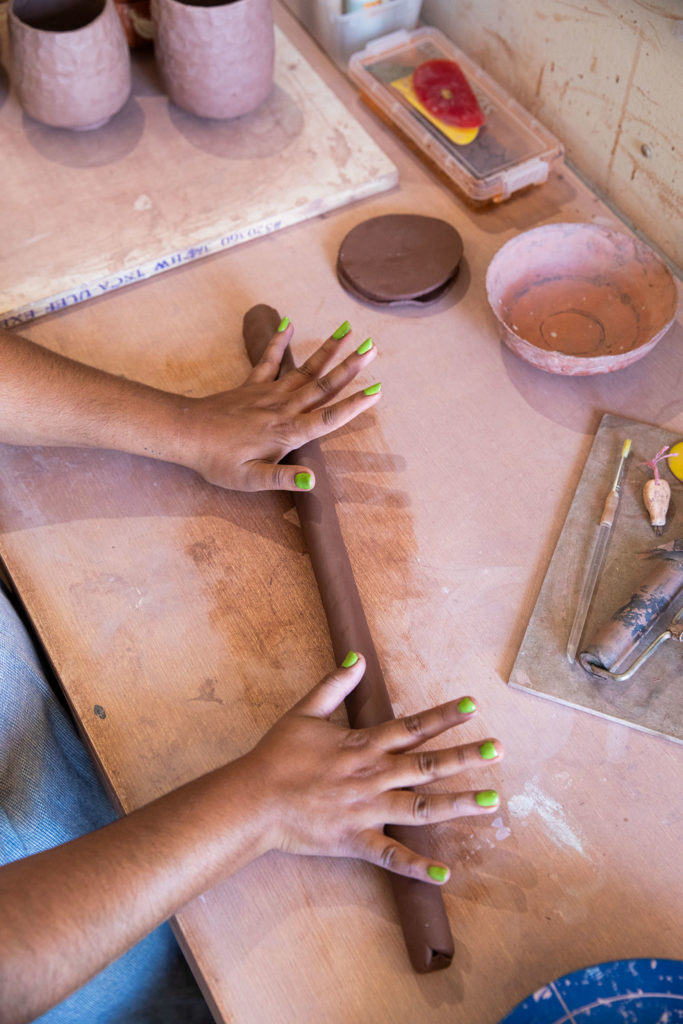
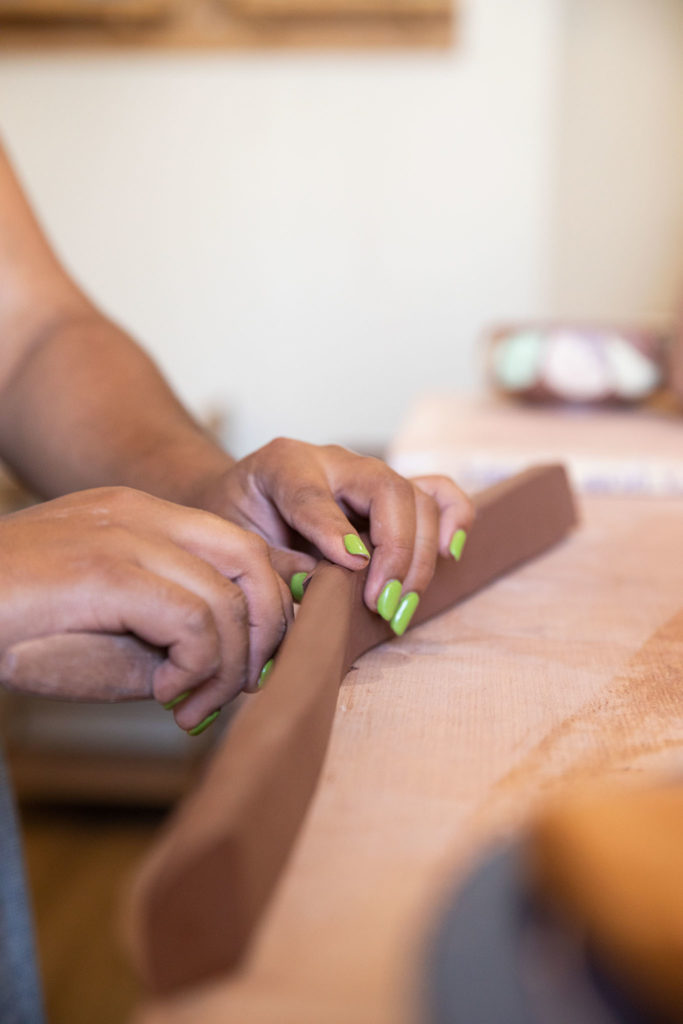
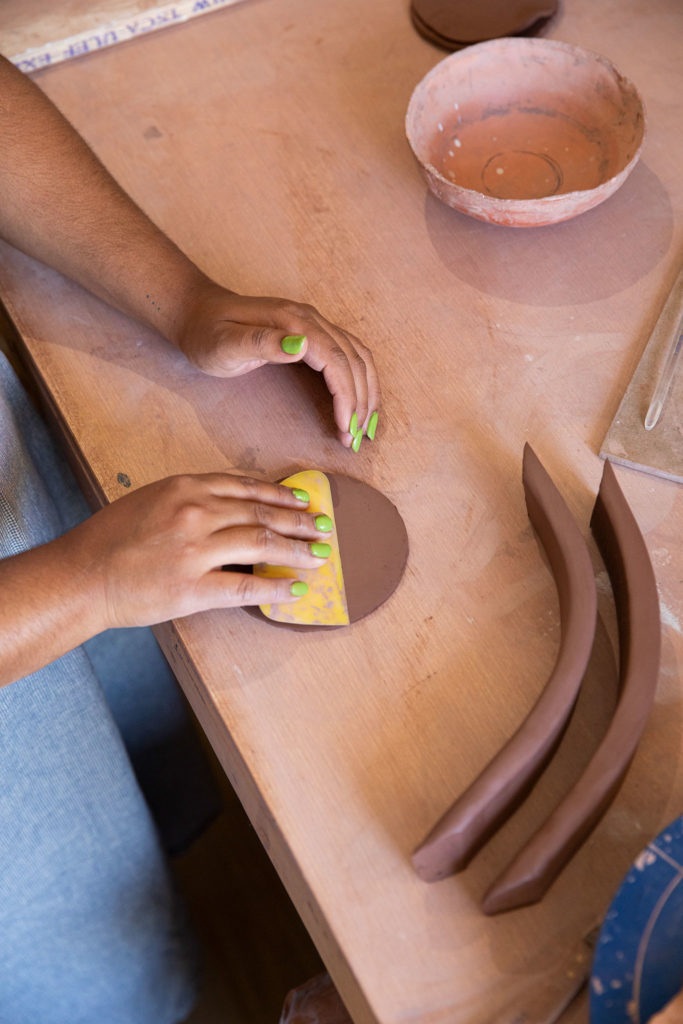
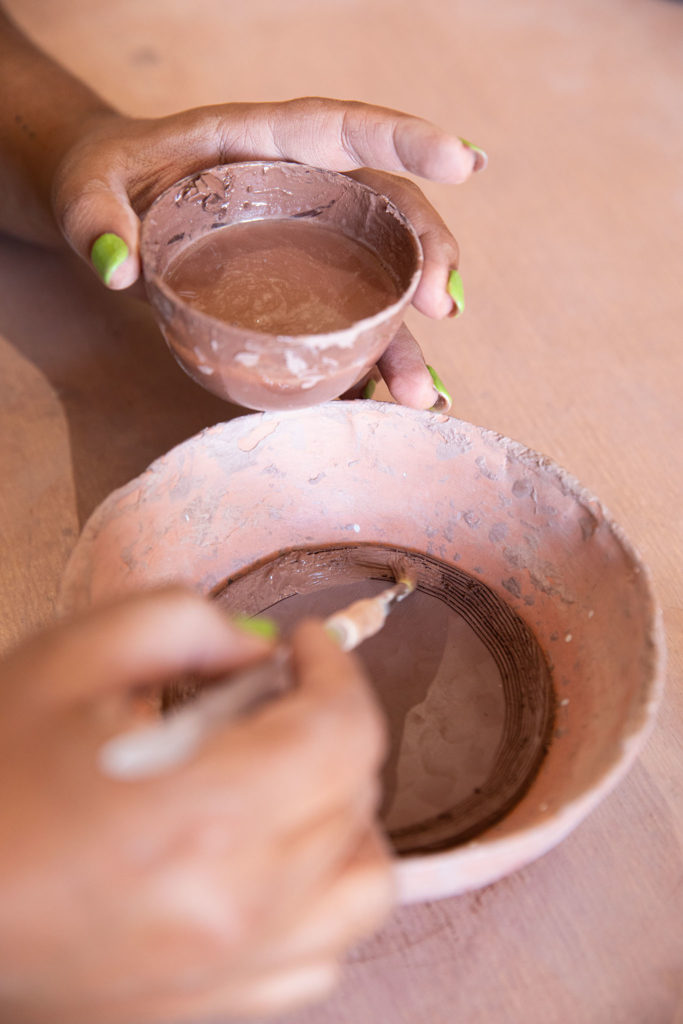
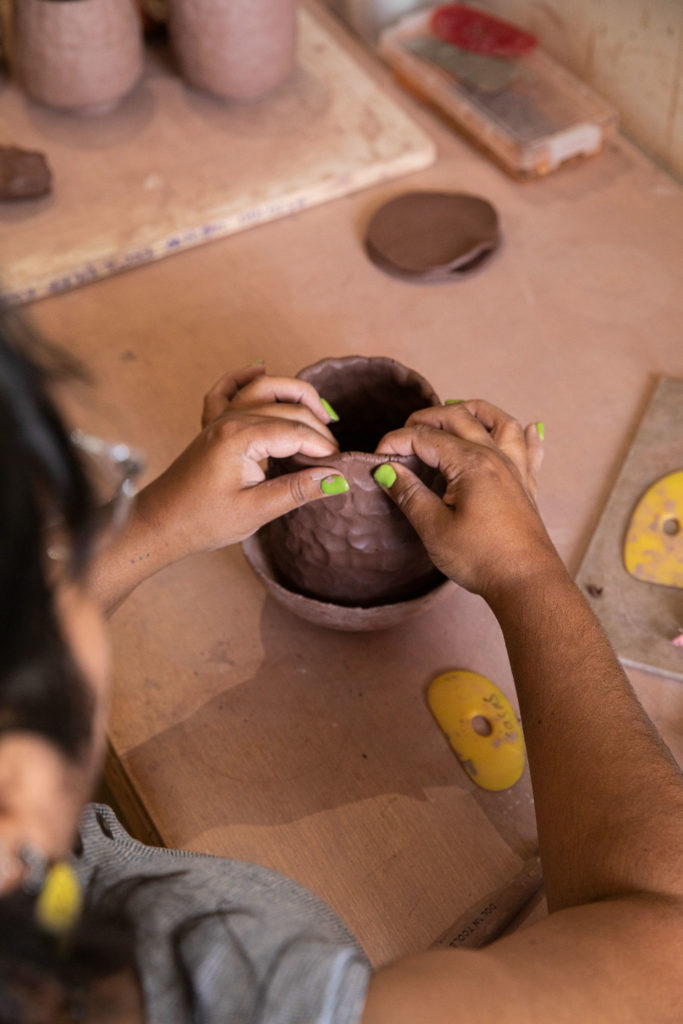
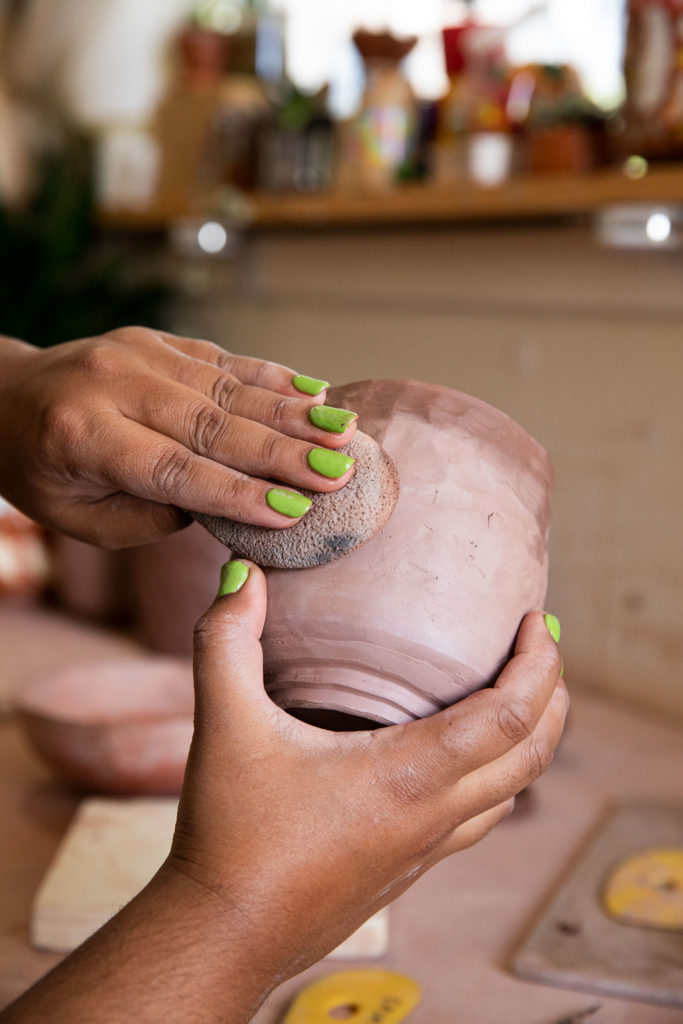
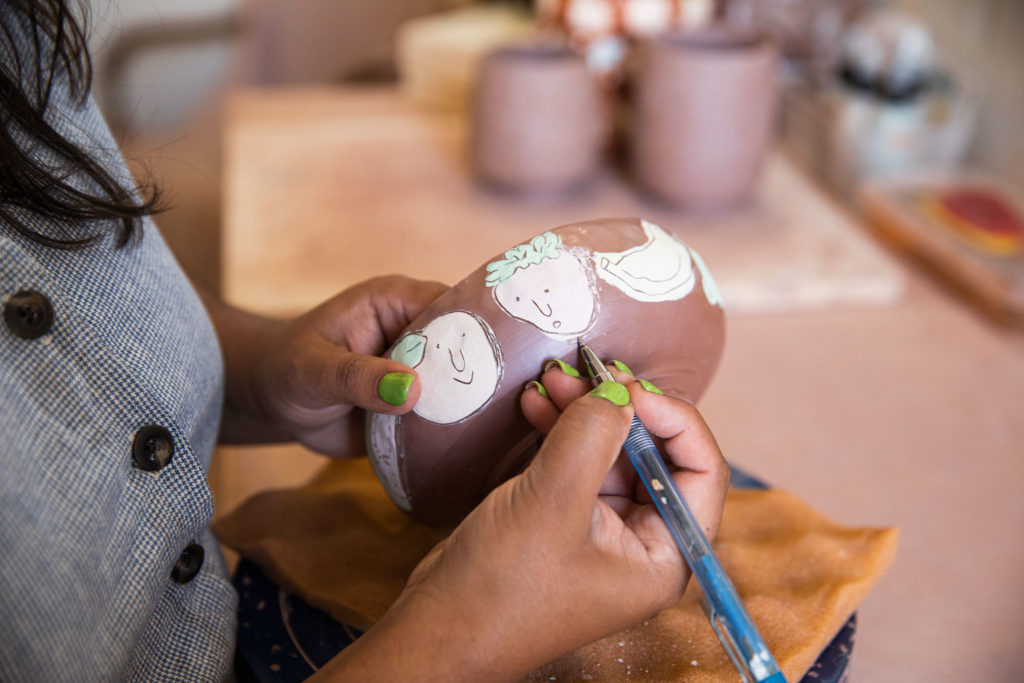
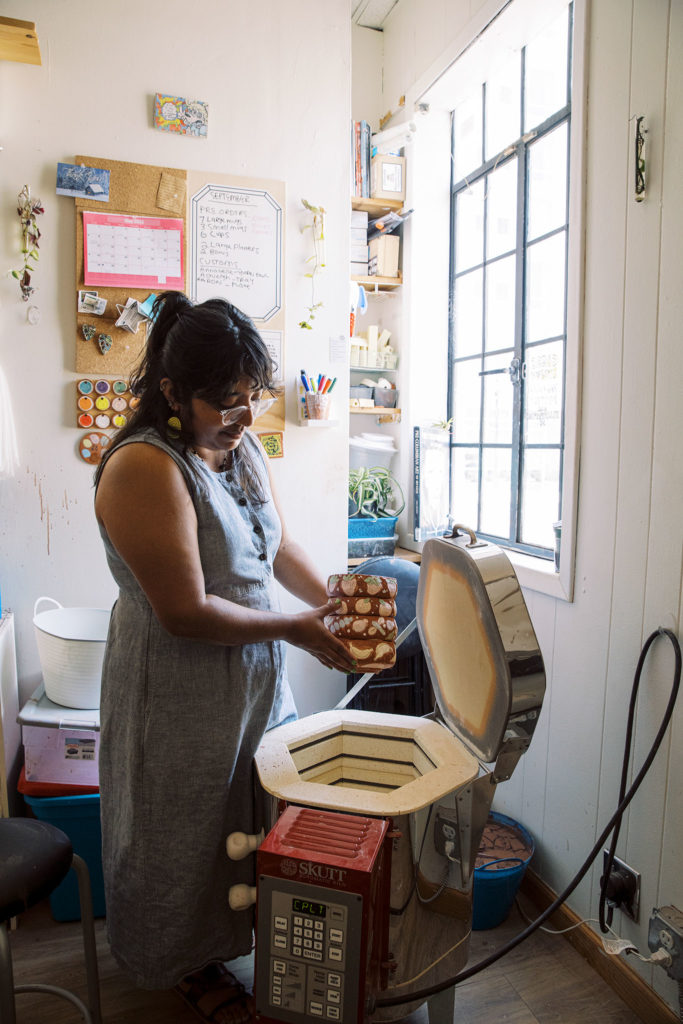
Hand-building clay involves pinching and shaping the medium, sometimes using a manually turned wheel in lieu of a kick wheel or electric potter’s wheel. Casas prefers the slower, more natural process, in the spirit of ancient Mexican ceramic traditions.
She further pays homage to her Mexican heritage through unexpected flourishes, like yellow discs surrounded by molded floral petals that she places on the base of her works. These evoke the colorful style elements found in Majolica earthenware, a style of pottery distinguished by its rich, colorful painted glazes, with origins in Spain and strong traditions in Mexico.
Casas’ red clay vases, bowls, mugs and other pieces are often decorated in the pastel hues of spring, the artist’s favorite season, and with illustrations that recall the cartoons, story books and stickers she loved in childhood. She frequently uses a process called terra sigillata, a burnishing technique that involves the application of a thin clay slip that coats the pottery and preserves its natural red clay while also giving it a waxy sheen.
That contrasts with illustrated features that are painted and sealed with a glossy, clear glaze. The juxtaposition makes the finished clay pieces look like they’ve been, she says, “sticker bombed.”
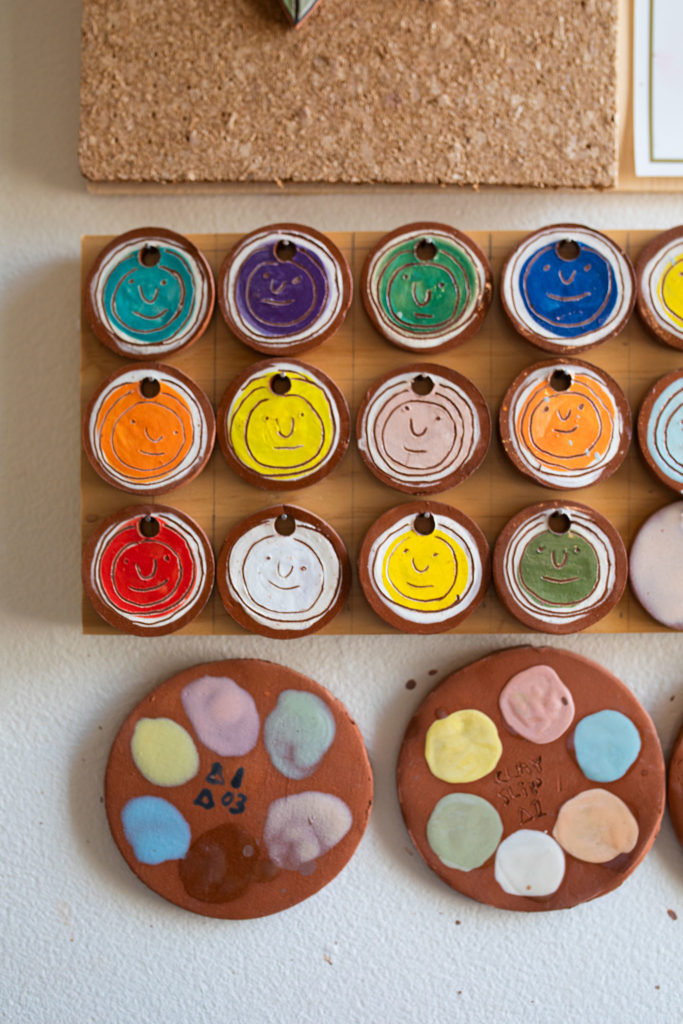
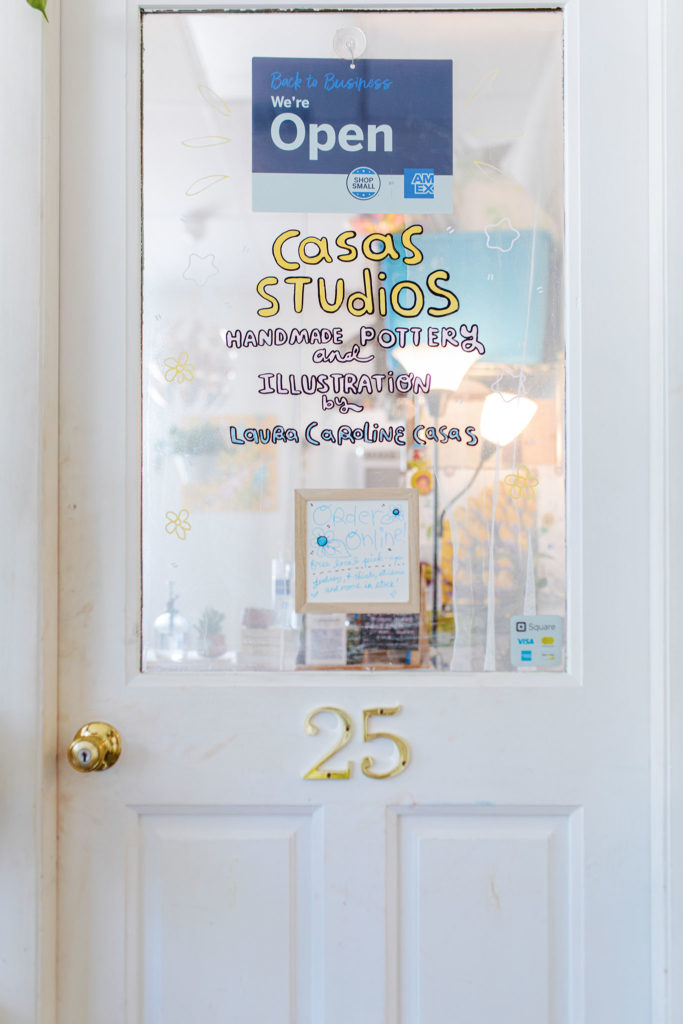
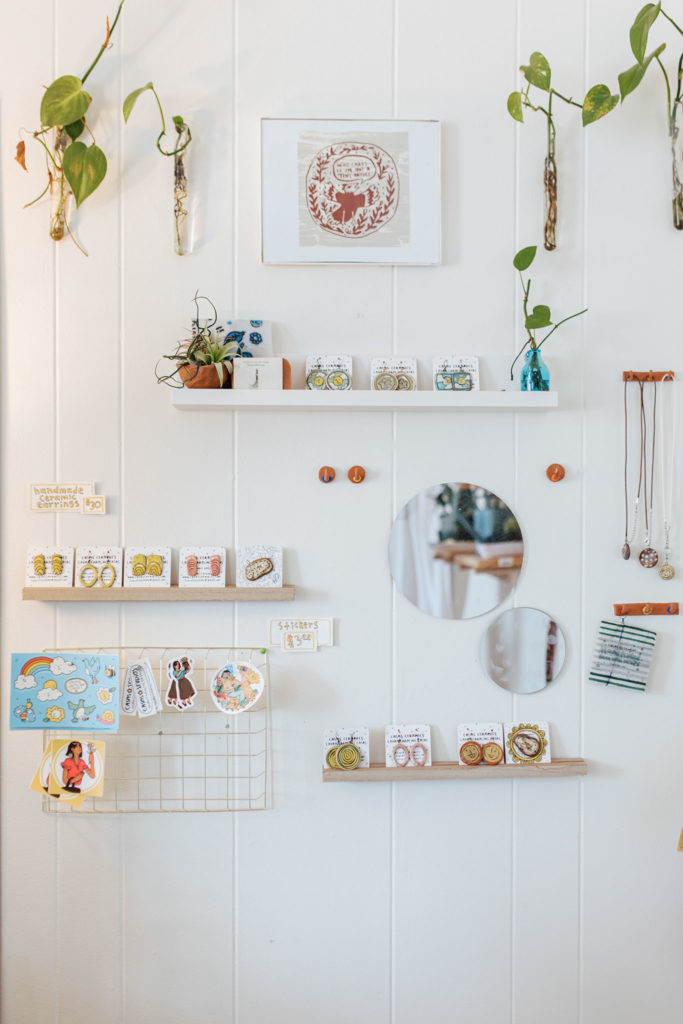
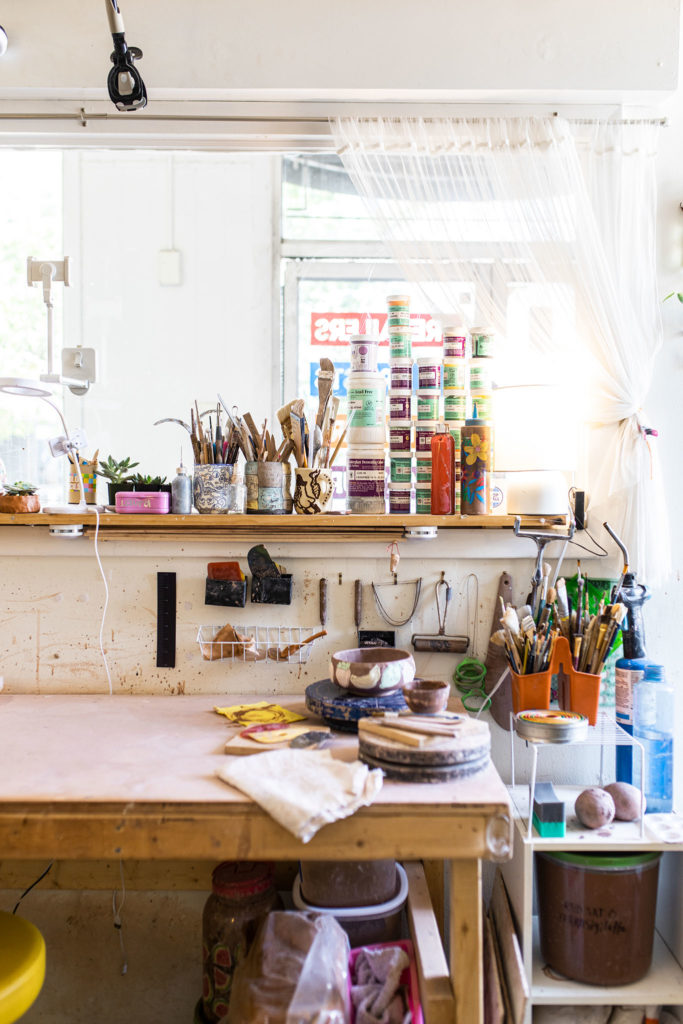
Casas moved to Raleigh in 2020 and opened her studio on Glenwood Avenue. Shortly after moving into her studio space, she accepted a role with the Pullen Arts Center as a coordinator and teacher. “This experience has been very informative for being in the Triangle community,” Casas says. She is eager to build herself a new, inclusive family of artists representing all ages and backgrounds here.
In her role at Pullen, Casas aims to expand access to ceramics to more diverse participants, particularly by recruiting emerging BIPOC artists looking to practice ceramics and pottery. Instagram and TikTok have become resources for Casas to identify talented local artists and recruit them for memberships, class enrollment and job opportunities at Pullen. “Through my own small ways I am hoping to bring in more people of color. Outreach is a priority,” she says.
For Eliza Kiser, director of the Pullen Arts Center, accessibility is a critical need, particularly among young and emerging artists. “A major challenge they face is making the leap from being a student with access to studios and equipment through a high school or college program, to being a young adult artist who doesn’t have those expensive but critical pieces of art-making equipment and infrastructure anymore,” Kiser says. “We are here to support them to continue making through that transition.”
The center, which reopened in September 2021 after renovations, has focused on adjusting to its newly expanded space, and plans to broaden its outreach efforts and class offerings.
“We look forward to building community partnerships in ceramics as well as in our other major program areas, like jewelry, painting and bookmaking/printmaking,” Kiser says.
Casas is also involved with the Triangle Arts Guild and is currently the organization’s vice president. In this role she is also eager to expand Raleigh’s pottery community to include more voices and perspectives of younger artists of color.
“Our task is to find presenters, so that gives me an opportunity to outreach and create a list of artists to pull from to introduce more people and more lived experiences,” says Casas.
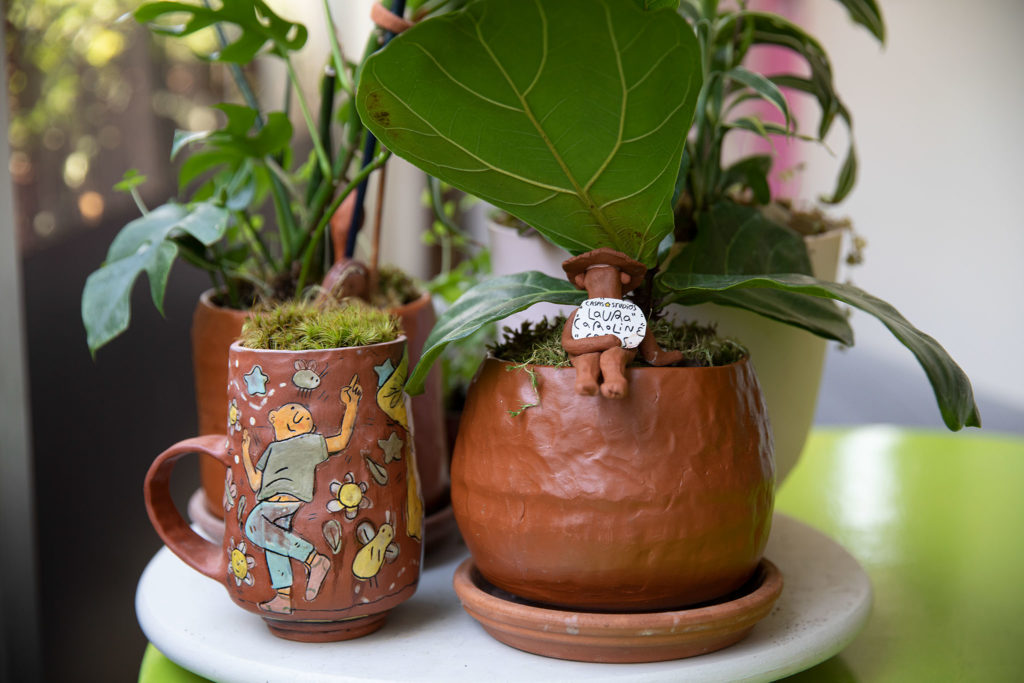
Through her ceramic art, Casas has developed a unique voice that gently defies boundaries and categorization. Her work is an exploration of her identity as a Mexican American and a celebration of inclusion. Whether she’s in her studio working on her own art or in a meeting talking about other artists, Casas is always looking for meaningful ways to expand the roots of her own ceramics family tree.
__
This article originally appeared in the July 2022 issue of WALTER Magazine.

